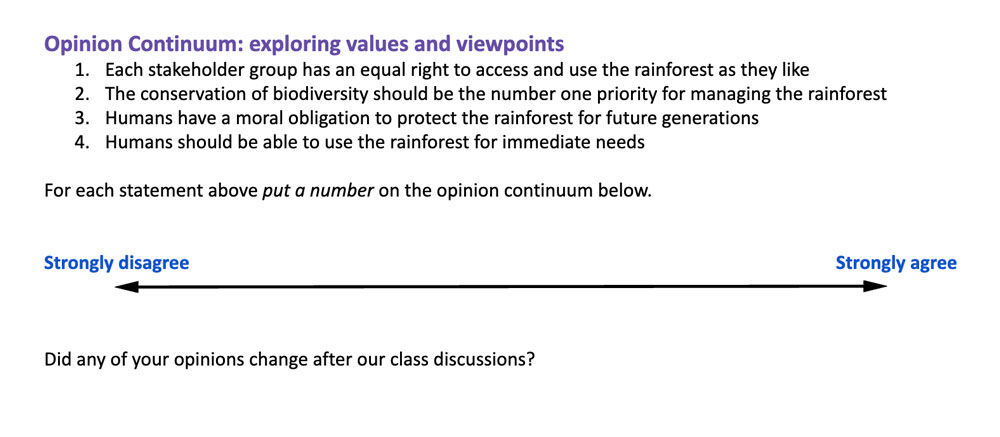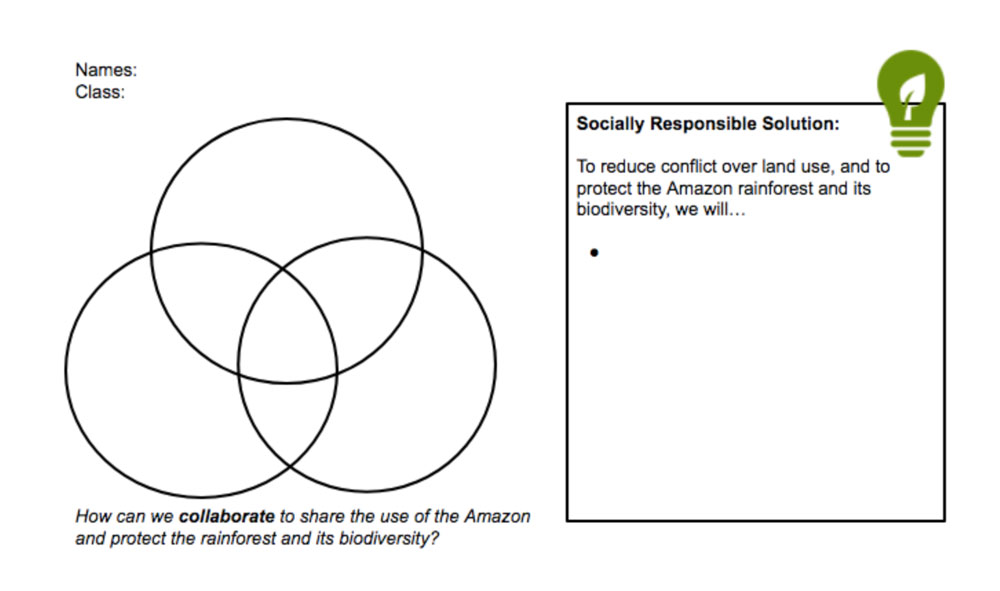
One of my favorite projects from my days as a middle school science teacher was during a unit on biodiversity in the Amazon Rainforest. I was teaching at an international school in Lima, Peru and we were fortunate enough to take our Grade 7 students to the Amazon for a week (this is also my all-time favorite school trip but that’s a whole other article). Not only did we want students to learn about the wonderfully rich biodiversity of the Amazon, but we also wanted to tackle a huge environmental issue - the deforestation of the rainforest. The project was called “Socially Responsible Solutions” (a phrase taken directly from our school mission), and it focused on the land use conflict between different stakeholder groups. Students had to research and represent a given stakeholder group (Native Amazonians, loggers, rubber tappers, settlers, cattle ranchers, and environmentalists). Groups of mixed stakeholders then had to come together to create a sustainable solution that would meet the needs of the stakeholders, while protecting the biodiversity of the rainforest. Not an easy feat!
I remember at the time feeling a little guilty that this science project had such a strong humanities focus. However, what I see now is that this project not only allowed students to explore complex real-world issues in science (habitat destruction, biodiversity loss, sustainable forestry, climate change, indigenous knowledge, conservation, etc.) but also provided an opportunity for students to practice their social and emotional skills.

In order to thrive in the real world, students need to have strong social and emotional skills. Intrapersonal skills (understanding who you are and being able to manage your emotions), as well as interpersonal skills (healthy relationships, communication, and conflict resolution), are integral to being a happy, healthy member of society. The Collaboration for Academic Social and Emotional Learning (CASEL) defines social-eotional learning (SEL) as “an integral part of education and human development.” CASEL provides a framework centered on five core competencies:
SEL is a life-long learning journey, a process through which students acquire the skills, knowledge, and attitudes necessary to have healthy relationships, fulfilling careers, and personal wellbeing. In essence, SEL develops the skills we need for a happy, healthy, and meaningful life.
SEL is not a stand-alone program nor a set of lessons, but a framework or approach to education. It is not a completely new initiative either; teachers have always been guiding students' social and emotional learning. The difference is that now schools are recognizing the need for intentional planning and explicit teaching of specific social and emotional competencies. They need a common language so that SEL can become the foundation of all learning inside the classroom and in the community, to develop a whole school approach that includes all students, teachers, and other adults to create happy, healthy communities where everyone can thrive. The research shows numerous positive outcomes of SEL from academic success to improved wellbeing, mental health, and safe schools.
Let’s look back at my seventh-grade science project. How was it helping students practice their social and emotional skills? The project focused heavily on interpersonal skills in the context of sustainability and land use conflict. Representing a stakeholder group required students to take others’ perspectives, demonstrate empathy, and identify unjust social norms, all of which are part of social awareness. When the stakeholders came together to discuss the issue, they needed collaborative problem-solving, conflict resolution, and cultural competency - essential relationship skills. Finally, as they proposed their socially responsible solution, groups had to demonstrate open-mindedness, use information and data to make a reasoned judgment, and consider the ethical consequences of their actions - all part of responsible decision-making. While my seventh graders did not come up with solutions that would actually solve these real-world problems (that would be an unfair expectation!) they did practice the skills they would need in the future to tackle such complex issues.

If we want emotionally healthy students who can contribute to a caring, more just world where everyone can thrive, we need to prioritize social and emotional learning in schools. We need students who are prepared to enter the world with empathy, strong relationship skills, and the ability to make responsible, ethical decisions. If you’re a teacher, you’re already an SEL educator. How do you support students' social interactions or their emotional well-being? Is this happening organically or intentionally in your day-to-day practice? Is it easier inside the classroom or outside? I’d love to hear your thoughts. Let’s have a conversation.
Ready to become an SEL champion at your school? Check out the CASEL guide to school-wide SEL.
Want to see the seventh-grade science Socially Responsible Solutions project? (Credit in this project also goes to my amazing colleague Nikki Ellwood and Compass Education).
--------------------------------------------------------------
Rae Merrigan teaches Health at Jakarta Intercultural School in Indonesia.
Twitter/X: @rae_frances
IG: mind_body_planet
Email: [email protected]